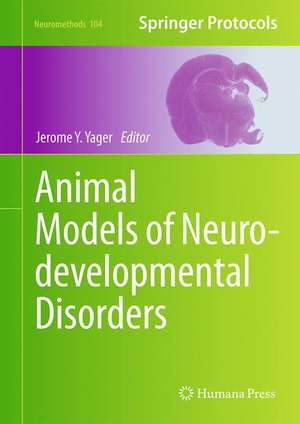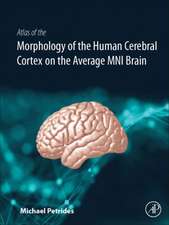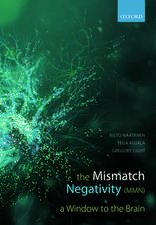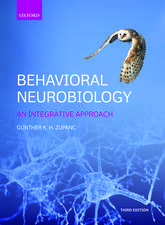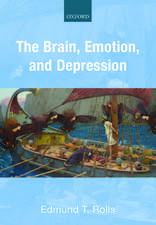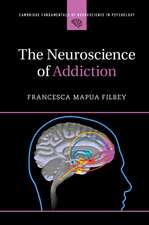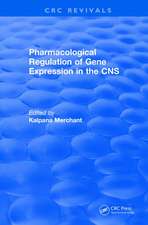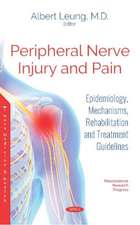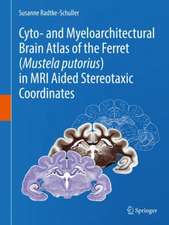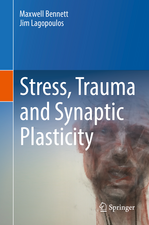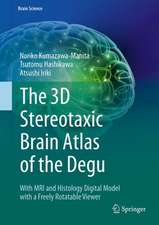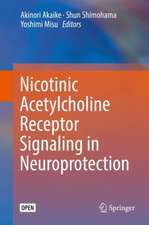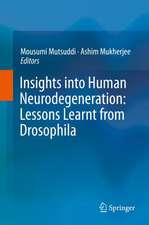Animal Models of Neurodevelopmental Disorders: Neuromethods, cartea 104
Editat de Jerome Y. Yageren Limba Engleză Hardback – 20 sep 2015
Practical and authoritative, Animal Models of Neurodevelopmental Disorders serves to introduce and entice those interested in better understanding and treating these disorders to the vital animal model world of investigation.
| Toate formatele și edițiile | Preț | Express |
|---|---|---|
| Paperback (1) | 364.99 lei 38-44 zile | |
| Springer – 22 oct 2016 | 364.99 lei 38-44 zile | |
| Hardback (1) | 395.29 lei 38-44 zile | |
| Springer – 20 sep 2015 | 395.29 lei 38-44 zile |
Din seria Neuromethods
- 5%
 Preț: 347.57 lei
Preț: 347.57 lei - 15%
 Preț: 659.53 lei
Preț: 659.53 lei - 15%
 Preț: 665.08 lei
Preț: 665.08 lei - 18%
 Preț: 986.63 lei
Preț: 986.63 lei - 24%
 Preț: 852.89 lei
Preț: 852.89 lei - 18%
 Preț: 953.03 lei
Preț: 953.03 lei - 18%
 Preț: 955.25 lei
Preț: 955.25 lei - 20%
 Preț: 1129.36 lei
Preț: 1129.36 lei - 20%
 Preț: 1252.04 lei
Preț: 1252.04 lei - 18%
 Preț: 1291.45 lei
Preț: 1291.45 lei - 15%
 Preț: 652.31 lei
Preț: 652.31 lei - 18%
 Preț: 955.70 lei
Preț: 955.70 lei - 23%
 Preț: 705.39 lei
Preț: 705.39 lei - 18%
 Preț: 973.38 lei
Preț: 973.38 lei - 18%
 Preț: 964.86 lei
Preț: 964.86 lei - 18%
 Preț: 968.03 lei
Preț: 968.03 lei - 15%
 Preț: 662.95 lei
Preț: 662.95 lei - 15%
 Preț: 646.43 lei
Preț: 646.43 lei - 15%
 Preț: 649.71 lei
Preț: 649.71 lei - 19%
 Preț: 580.67 lei
Preț: 580.67 lei - 19%
 Preț: 584.12 lei
Preț: 584.12 lei - 19%
 Preț: 566.41 lei
Preț: 566.41 lei - 15%
 Preț: 652.17 lei
Preț: 652.17 lei - 15%
 Preț: 655.13 lei
Preț: 655.13 lei - 18%
 Preț: 959.36 lei
Preț: 959.36 lei - 15%
 Preț: 652.49 lei
Preț: 652.49 lei - 15%
 Preț: 649.54 lei
Preț: 649.54 lei - 15%
 Preț: 649.87 lei
Preț: 649.87 lei - 15%
 Preț: 650.19 lei
Preț: 650.19 lei - 15%
 Preț: 648.42 lei
Preț: 648.42 lei - 18%
 Preț: 1039.22 lei
Preț: 1039.22 lei - 18%
 Preț: 963.15 lei
Preț: 963.15 lei
Preț: 395.29 lei
Nou
Puncte Express: 593
Preț estimativ în valută:
75.64€ • 78.97$ • 62.60£
75.64€ • 78.97$ • 62.60£
Carte tipărită la comandă
Livrare economică 01-07 aprilie
Preluare comenzi: 021 569.72.76
Specificații
ISBN-13: 9781493927081
ISBN-10: 1493927086
Pagini: 280
Ilustrații: XIII, 267 p. 64 illus., 43 illus. in color.
Dimensiuni: 178 x 254 x 19 mm
Greutate: 0.87 kg
Ediția:1st ed. 2015
Editura: Springer
Colecția Humana
Seria Neuromethods
Locul publicării:New York, NY, United States
ISBN-10: 1493927086
Pagini: 280
Ilustrații: XIII, 267 p. 64 illus., 43 illus. in color.
Dimensiuni: 178 x 254 x 19 mm
Greutate: 0.87 kg
Ediția:1st ed. 2015
Editura: Springer
Colecția Humana
Seria Neuromethods
Locul publicării:New York, NY, United States
Public țintă
Professional/practitionerCuprins
Unilateral Common Carotid Artery Ligation as a Model of Perinatal Asphyxia: The Original Rice-Vannucci Model.- Bilateral Uterine Artery Ligation (BUAL): Placental Insufficiency Causing Fetal Growth Restriction and Cerebral Palsy.- Perinatal Intracerebral Hemorrhage Model and Developmental Disability.- Rabbit Kit Model of Glycerol-Induced Intraventricular Hemorrhage.- Models of Perinatal Brain Injury in Premature and Term Newborns Resulting from Gestational Inflammation Due to Inactivated Group B Streptococcus (GBS), or lipopolysaccharide (LPS) from E. coli and/or Immediately Post-Natal Hypoxia-Ischemia (HI).- Fetal Brain Activity in the Sheep Model with Intra-Uterine Hypoxia.- Studies of Perinatal Asphyxial Brain Injury in the Fetal Sheep.- The Sheep as a Model of Brain Injury in the Premature Infant.- The Rabbit as a Model of Cerebral Palsy.- A Newborn Piglet Survival Model of Post-Haemorrhagic Ventricular Dilatation (PHVD).- Physiologic Aspects of the Piglet as a Model of Perinatal Hypoxia and Reoxygenation.- The Newborn Pig Global Hypoxic-ischemic Model of Perinatal Brain and Organ Injury.- Animal Models of Fetal Alcohol Spectrum Disorder.- Modeling Mental Retardation in Drosophila.- Animal Models of Cerebral Dysgenesis: Excitotoxic Brain Injury.- The Effect of Age on Brain Plasticity in Animal Models of Developmental Disability.
Textul de pe ultima copertă
Providing a spectrum of models that is reflective of the various species that can be utilized in experimentation on disorders across a broad range of developmental disabilities, this volume collects expert contributions involved in investigation of the causes, outcomes, treatment, and prevention. Animal Models of Neurodevelopmental Disorders explores models of perinatal hypoxia-ischemia/cerebral palsy and stroke, autism spectrum disorder, fetal alcohol syndrome, as well as mental retardation. Written in the popular Neuromethods series style, chapters include the kind of detail and key advice from the specialists needed to get successful results in your own laboratory.
Practical and authoritative, Animal Models of Neurodevelopmental Disorders serves to introduce and entice those interested in better understanding and treating these disorders to the vital animal model world of investigation.
Practical and authoritative, Animal Models of Neurodevelopmental Disorders serves to introduce and entice those interested in better understanding and treating these disorders to the vital animal model world of investigation.
Caracteristici
Consolidates a diverse selection of animal models Provides practical details from leading researchers in the field Includes cutting-edge, lab-ready methodologies
